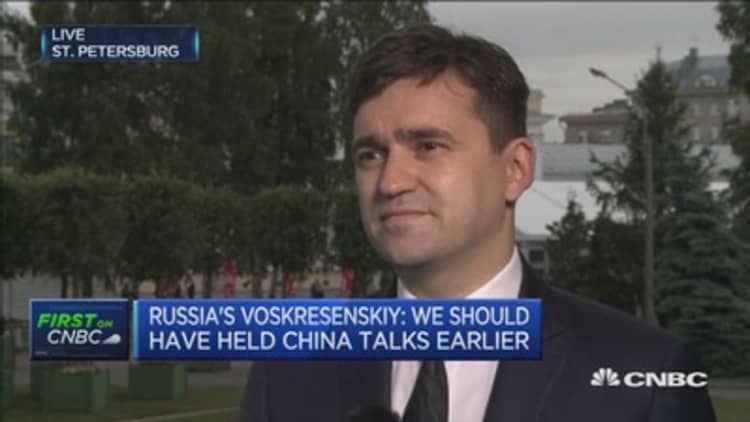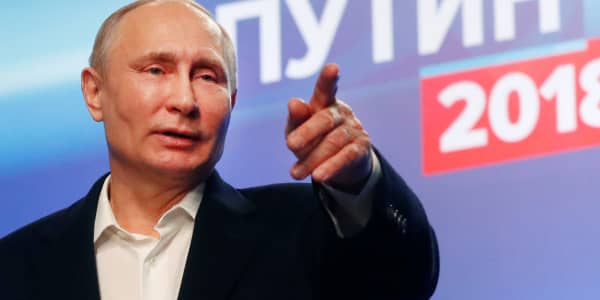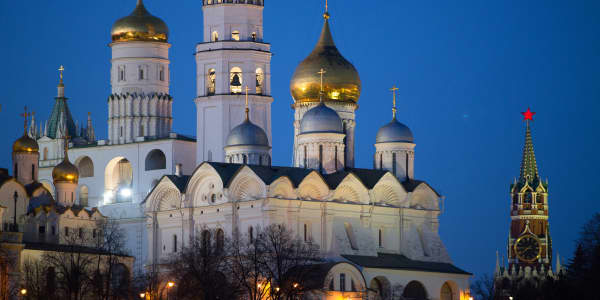Russia's pivot to the East looks set to become even sharper, with its relationship with China deepening, following the fallout from sanctions imposed by the West.
The first big gesture in this renewed closeness came in May 2014, when Russian President Vladimir Putin and his Chinese counterpart Xi Jinping announced a $400 billion gas supply deal.
Since then, a number of important deals have further cemented their relationship for decades to come. The move closer – and as a consequence less reliant on trade with the U.S. and Europe – has raised fears for the West's economic fortunes.
Read MoreWill Putin's key project reflect Russia's turnaround?
"Our vision of a trans-Eurasian belt of development completely coincides now with the Chinese idea for a new Silk Road," Vladimir Yakunin, president at Russian Railways and one of the Russian businessmen on the Western sanctions list, told CNBC at this year's St Petersburg Economic Forum (Spief) in Russia.

"The idea is that the supportive and very good will combine ideas to develop mega-projects for the territory of Eurasia. For the global economy, it will also be attractive."
Siberia in focus
Of course, this is far from Russia's first pivot East. Since the first tracks were laid on the trans-Siberian Railroad in the late nineteenth century, Russia has gone through several cycles of growing closeness, estrangement and then closeness again with China.
"There is no pivot East. What we are doing is just pragmatically developing economic ties with the fastest growing region in the world," Stanislav Voskresenskiy, Russia's deputy minister of economic development, told CNBC at Spief.
"We should have been doing this for a decade."
Among the Sino-Russian projects are plans for a joint project between Russian Railways and the Chinese government to build a new $300 billion high-speed rail link between Beijing and Moscow – cutting the journey from five days to between one and two days.
Russia's Pacific coastline is sparsely populated and economically depressed – and initiatives which bring jobs and money are likely to be welcome. The very name of a planned pipeline, the 'Power of Siberia', which will bring gas from this coastline to Northern China, suggests that it will help restore dynamism to the region. It will effectively shift Russia's gas industry focus from West to East.
Another pressure point for the West is the new China-backed Asian Infrastructure Investment Bank, which the U.S., unlike many other Western powers, has declined to join.
Trouble for the dollar?
One of the most potentially important parts of this closer relationship between China and Russia is likely to be its effect on the status of the dollar as the world's reserve currency.
As part of the gas deal, it looks as though the two companies may use the ruble and yuan rather than the dollar, which currently has a near-stranglehold on oil transactions.
In October, China and Russia inked a currencies' swap deal allowing Russia to borrow yuan and lend ruble, which should strengthen Russia's currency reserves. China has made similar deals with resource-rich but economically troubled Argentina and Venezuela in recent months.
This could all have the effect in the long term of reducing reliance on the dollar – and consequently undermining the U.S.'s economic status.





